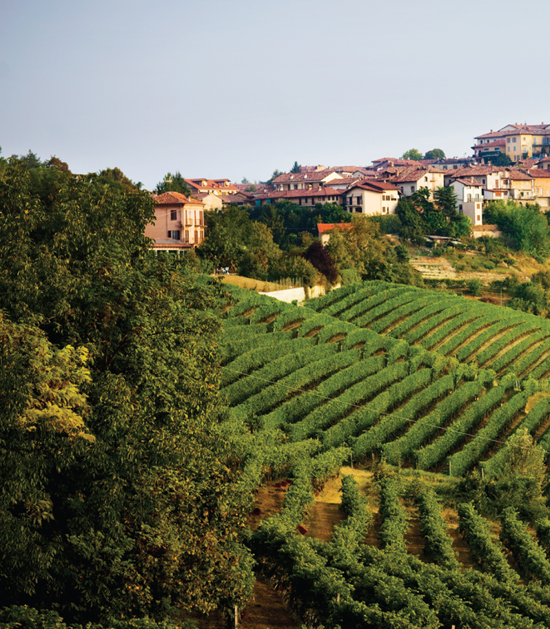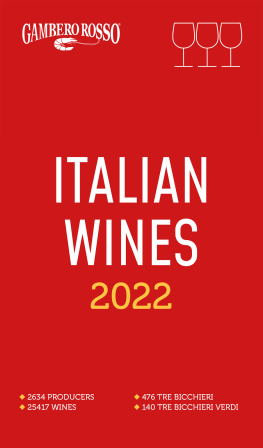

Copyright 2012 by 7 Hills Restaurant, LLC
Photographs copyright 2012 by Sara Remington
All rights reserved.
Published in the United States by Ten Speed Press, an imprint of the Crown Publishing Group,
a division of Random House, Inc., New York.
www.crownpublishing.com
www.tenspeed.com
Ten Speed Press and the Ten Speed Press colophon are registered trademarks of Random House, Inc.
Library of Congress Cataloging-in-Publication Data
Lindgren, Shelley.
SPQR : modern Italian food and wine / by Shelley Lindgren and Matthew Accarrino with Kate Leahy.
p. cm.
1. Cooking, Italian. I. Accarrino, Matthew. II. Leahy, Kate. III. Title.
TX723.L548 2012
641.5945dc23
2012014120
eBook ISBN: 9781607743842
Hardcover ISBN: 9781607740520
Cover and text design by Toni Tajima
Food styling for images by Robyn Valarik
by Frankie Frankeny
by Ed Anderson
v3.1_r2

CONTENTS
Roman Roads

Recipes

INTRODUCTION
Ancient Information Highways
Americans have learned a lot from Italians. We embrace Old World traditions, such as buying cheese from a cheese maker we know by name or building relationships with farmers that grow our tomatoes. Now, as in Italy, we appreciate how wine can season a meal as well as any ingredient. These are just a few of the reasons why we celebrate Italys culinary contributions at SPQR, a small restaurant on the west side of Fillmore Street in San Francisco. The name, an acronym for the Latin translation of The Senate and the People of Rome, is a proclamation of Roman democracy. The restaurant itself is modestwooden tables in the dining room surround a marble bar containing the small open kitchenbut the experiences offered nightly are nowhere near plebian. Our guests may sample spring lamb wrapped in chard leaves on one night and pillows of agnolotti filled with fava beans and black truffle the next, swirling glasses of wine that hail from the coast of Liguria to the Adriatic Sea. In this setting, Shelley Lindgren champions little-known Italian wines while Matthew Accarrino composes menus with ideas gleaned from Italy and California.
This book, however, is not intended to be a restaurant cookbook. Rather, it is a slow-paced passeggiata , an Italian stroll, taken along the ancient Roman roads of central and northern Italy. Each chapter begins with Shelleys description of regional wines, focusing on the people and grapes that distinguish the area. The second half offers Matthews recipes inspired by memories, traditions, and travel.
Romes ancient roads were once information conduits of Western culture. The networks of cobblestone roadsthe first structurally sound pathways in Europelinked the hinterlands to Rome. These roads also opened up markets, supplying goods and information to all corners of the peninsula long after Rome fell in AD 476. Even though Italy was not unified until 1861 (and even then, borders remained in flux well into the twentieth century), the foundation of a collective Italian consciousness was set early on by these networks, and these roads remain woven into the countrys cultural fabric.
Contemporary information highways arent as tangible as the ancient Roman roads. Yet the Internet and international travel have hastened the spread of Italian culture throughout the world, including in our corner of California. In between visits to Italy, we stay in touch with Italian winemakers, chefs, and restaurateurs through phone calls and email. We also encourage our Italian friends to visit SPQR, pour their wines, and share their stories. This book is inspired by these friendships.
A Roman Road Guide
The chapters of this book are divided along Roman roads, with each road marking one or two Italian regions. Here is a sketch of their geography and history.
VIA APPIA. When the Romans broke ground in 312 BC on the Appian Way, they wanted a faster route between Rome and Campania. It became the prototypical Roman road.
VIA SALARIA . The ancient Salt Route, which facilitated the trade of salt along the Tiber River, predates Romein fact, it is often credited for the inception of Rome. Via Salaria was later extended to Le Marche.
VIA FLAMINIA. This road cut through Umbrian territory to the coast, making the heart of the peninsula accessible to Roman rule.
VIA POSTUMIA. Linking Genoa with Aquileia, this road facilitated trade across Northern Italy.
VIA CLAUDIA AUGUSTA. This was the first major path through the Alps connecting the Italian peninsula and northern Europe.
VIA AEMILIA. The Emilian Way allowed the Romans to control the Po Valley. The major cities of Emilia-Romagna, including Bologna, formed along its path.
VIA FRANCIGENA. Comprising several ancient roads, the Via Francigena emerged during the Middle Ages as the path for pilgrims en route to Rome.
VIA AURELIA. This coastal road once ran from Rome to France. Today the road is Strada Statale 1.


La Strada del Vino
My immersion into the world of Italian wine began in the Mezzogiorno, the southern portion of the country. In 2004 while we were opening our first restaurant, A16, the wine emerging from Campania, Puglia, and Sicilia was just starting to show its potential. These wines were incredible values and worked like magic in food pairing, which made it easy for me to focus my wine list on southern Italy. But just as I became hooked on the wines of Mount Etna, Id hear the buzz about enticing discoveries beyond the Mezzogiorno, like Timorasso, an uncharacteristically rich white wine from Piemonte. Gradually, my tastings crept north. One day Id sample a zesty Frascati from Lazio, the region around Rome. The next Id sip a mineral-tinged Verdicchio from Le Marche. Before long, fragrant Nebbiolo wines from Roero in Piemonte and Donnas in Valle dAosta were on the table. How could I possibly pass up a chance to share these finds with customers at my restaurant?
That opportunity came with a second restaurant, SPQR. Although our list needed to be small (the restaurant has nearly no storage space), I wanted it to offer a range of wine styles from all over Italy. With my oldest son, Phineas, then only a baby, tucked under one arm, I tasted and spat my way through central and northern Italy, making many discoveries along the way. As I sampled and researched the wines, I came to realize that central and northern Italy had just as many unheralded wines as the South, like Sagrantino from Umbria and Ribolla Gialla from Friuli-Venezia Giulia. With some trepidation, I also dipped into giant wine producing areas, like Soave and Chianti, and found plenty of artisan wines to pour. Perhaps our guests were primed from experiences with new wines at A16, but I was amazed at how willing they were to take a chance on unfamiliar bottles. When Matthew joined the team, the discoveries continued. His knack for balancing dishes with acidity gave me more options for wine pairings, and soon I was pouring a Gewrztraminer from the Alto Adige, a region that borders Austria, with everything from fried rabbit livers to farro-stuffed quail.


















